Taiwan Tech’s visual message design: discover Songyan Finding AIC.
"Do you know where the American Innovation Center (AIC) in Songyan is? How to get there?" This is a question that many people often get lost in the Songshan Cultural and Creative Park. Associate Professor Ting-Yi Lin from Taiwan Tech led five students from the VIDLab laboratory to design a solution to the American Innovation Center’s pathfinding challenge. From May 3rd to May 12th, from 11:00 am to 4:00 pm daily, everyone is invited to participate in the “Finding AIC” challenge within the Songshan Cultural and Creative Park.
Due to the common occurrence of people losing their way within the park, let alone finding the correct location. The American Innovation Center is hidden on the second floor of the cigarette factory in the south of Songshan Cultural and Creative Park. Finding the right location in the vast park is often a big challenge for visitors and distinguished guests. Therefore, the American Innovation Center relied on the expertise of Associate Professor Ting-Yi Lin from the Department of Design at Taiwan Tech in visual message design to serve as the host of this volunteer project. She led five volunteer students, including Zhi-Ning Xu, Bing-Chun Wu, Yu-En Shi, Yong-Qi Zheng, and Yu-Jie Chen, to design methods that make it easier to locate the American Innovation Center.
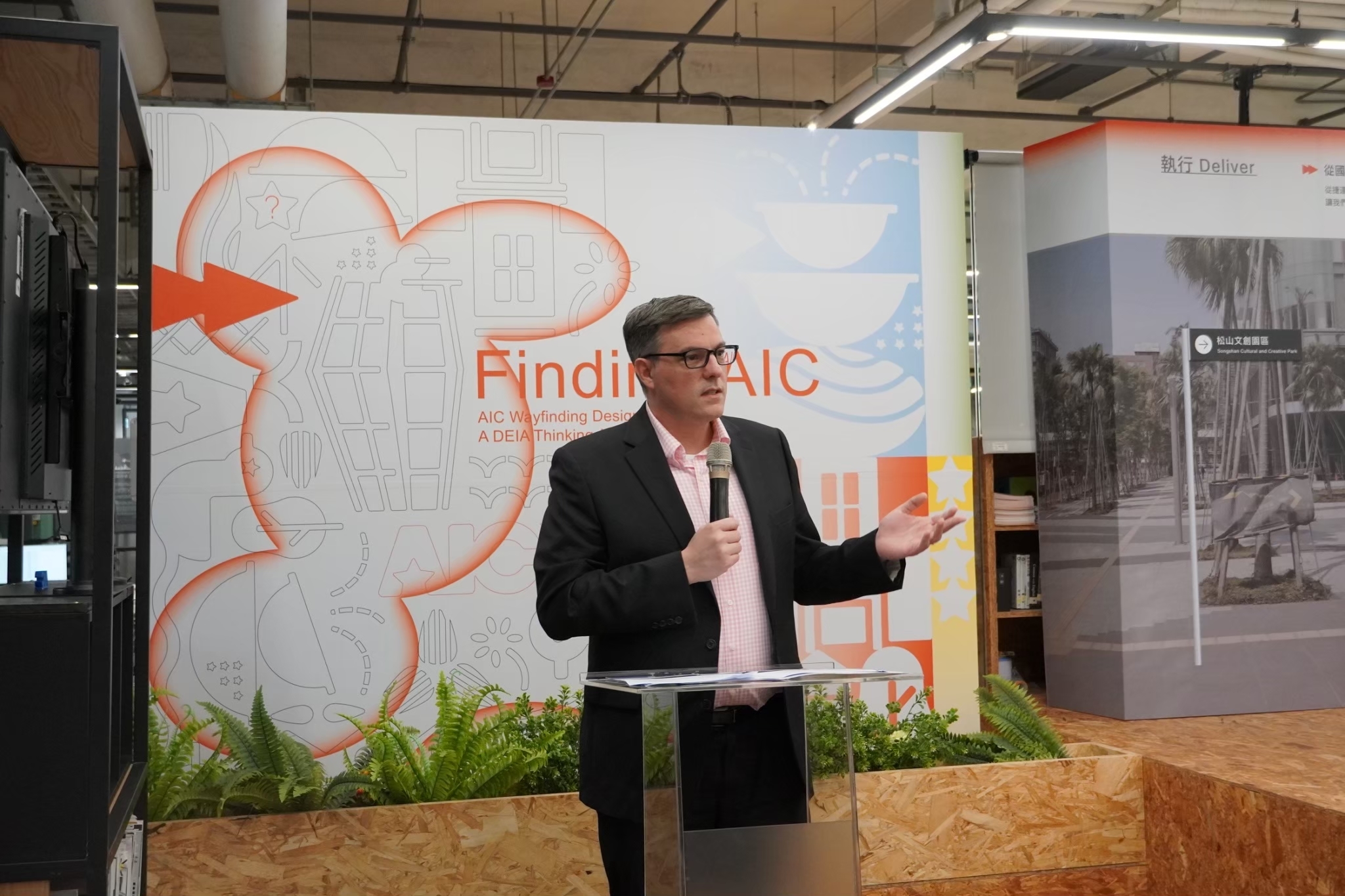
John Dow, the Cultural Officer of the American Institute in Taiwan, delivered a speech.
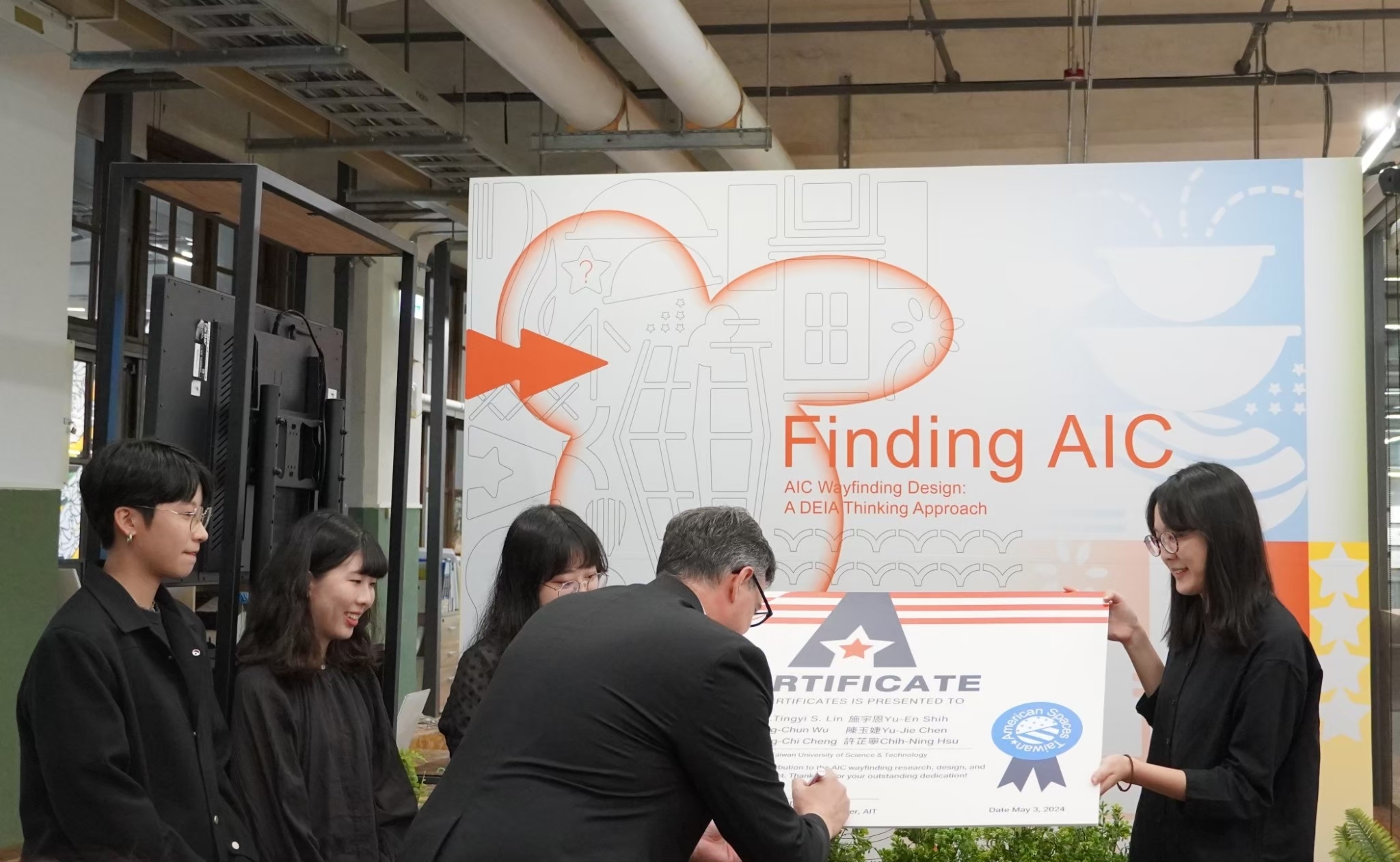
John Dow, the Cultural Officer of the American Institute in Taiwan, signed the certificates.
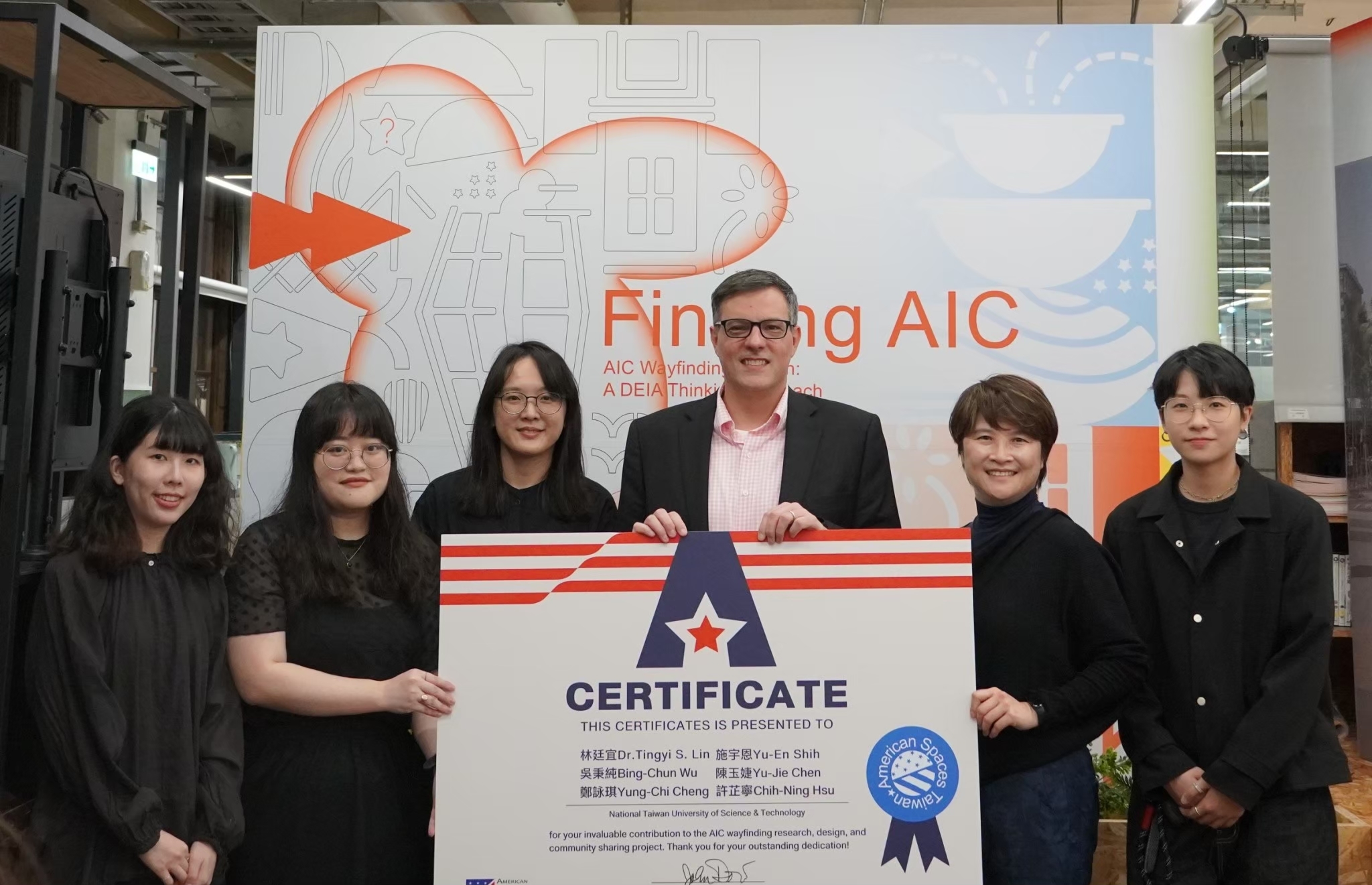
John Dow, the Cultural Officer of the American Institute in Taiwan, presented certificates to express gratitude to the volunteer team from Taiwan Tech.
After considering the history and culture of the park, as well as understanding the pain points and needs of the users, the team proposed solutions from the perspectives of message and visual design. Different groups have specific usage needs. For colorblind individuals, designs with colorblind tests were implemented to ensure both red-green colorblind individuals can distinguish the differences. Additionally, layout designs were adjusted based on height and line of sight to ensure that the main information falls within the usual field of vision between 90 and 180 centimeters. The fonts are universal, inclusive, highly recognizable, and easy to read.
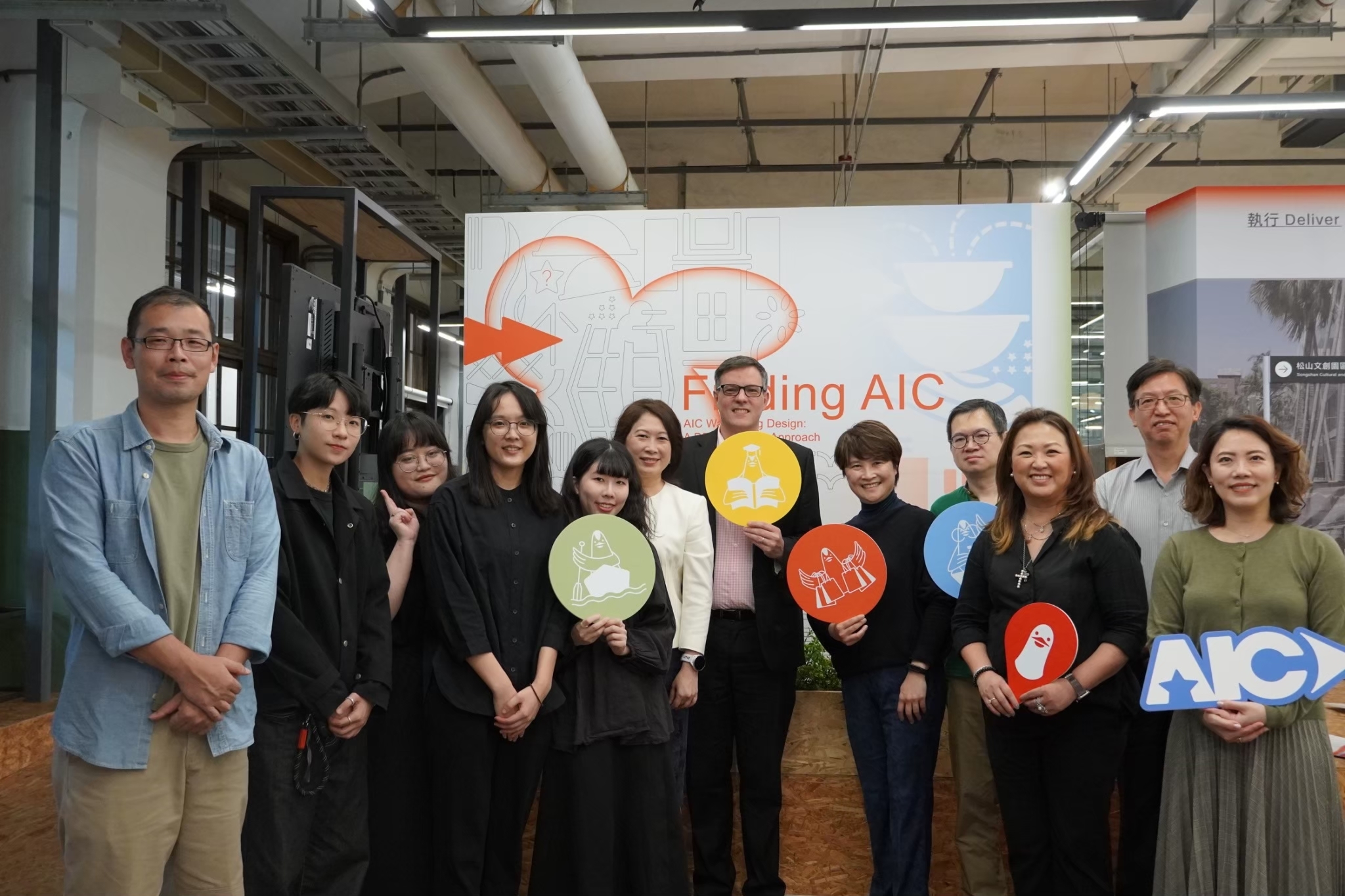
All group photo.
First, the park area is divided into four colors to allow people to easily identify the areas in a more intuitive way. Then, using directional patterns derived from the four-step process of tobacco manufacturing, visitors can navigate towards the south-facing corridor. With the help of icons, they can locate the staircase leading to the second floor and then find the American Innovation Center based on door number S203! Utilizing the DEIA principles (Diversity, Equity, Inclusion, Accessibility) in the design process, the route system design from research to solution is presented, providing the public with easily readable, understandable, and usable directional information.
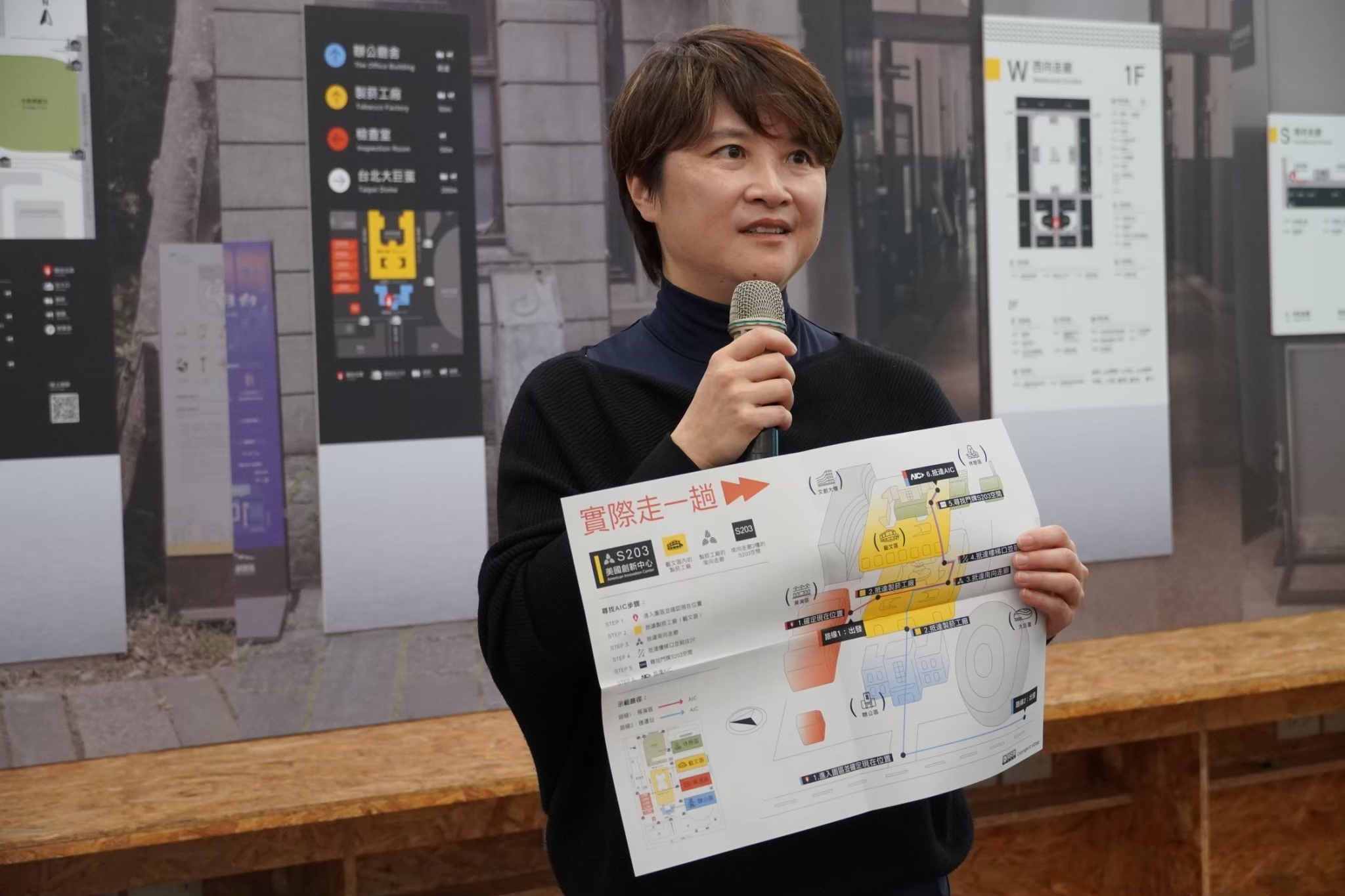
Associate Professor Ting-Yi Lin from the Department of Design at Taiwan Tech introduces the content of the exhibition.
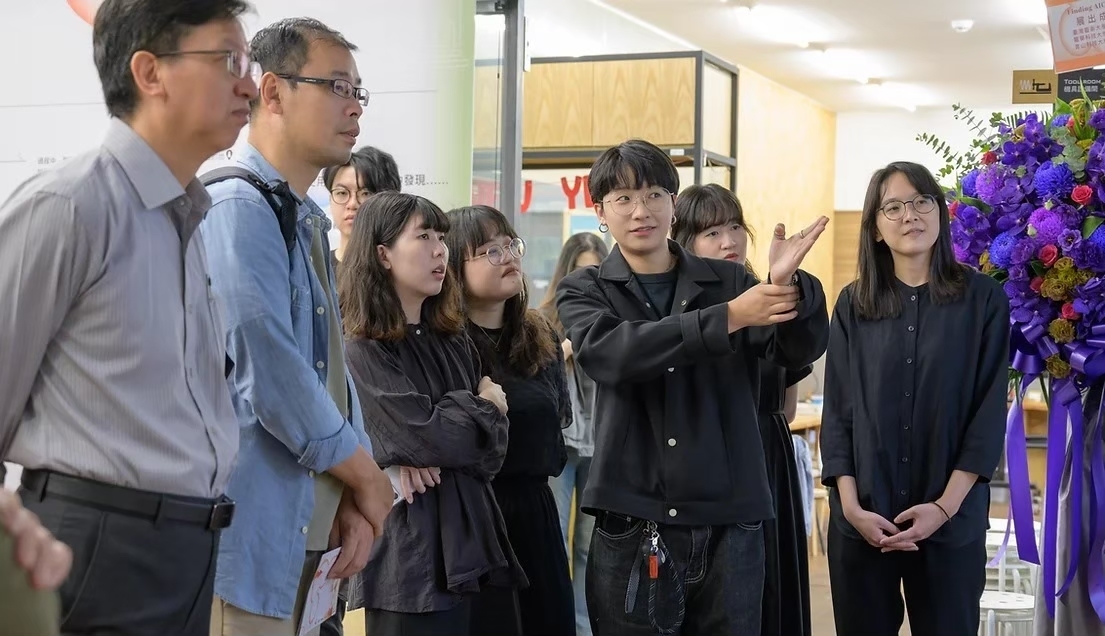
Students from the Department of Design at Taiwan Tech introduce the content of the exhibition to the guests.
Associate Professor Ting-Yi Lin emphasizes: “Design has the power to transcend boundaries and change lives. As designers, we have a responsibility to harness this power to create positive impacts in our surroundings and wider context. This exhibition not only showcases the incredible talents of our students but also underscores the importance of the younger generation shaping the future through design innovation.”
The collaboration between Taiwan Tech and the American Innovation Center is just the beginning of a demonstration. We hope that many navigational challenges in buildings can be addressed through thoughtful design tailored to users' needs, and they will be more willing to enter the site. This also encourages diverse partnerships between different sectors and academic institutions, empowering the younger generation to have a meaningful impact on society.
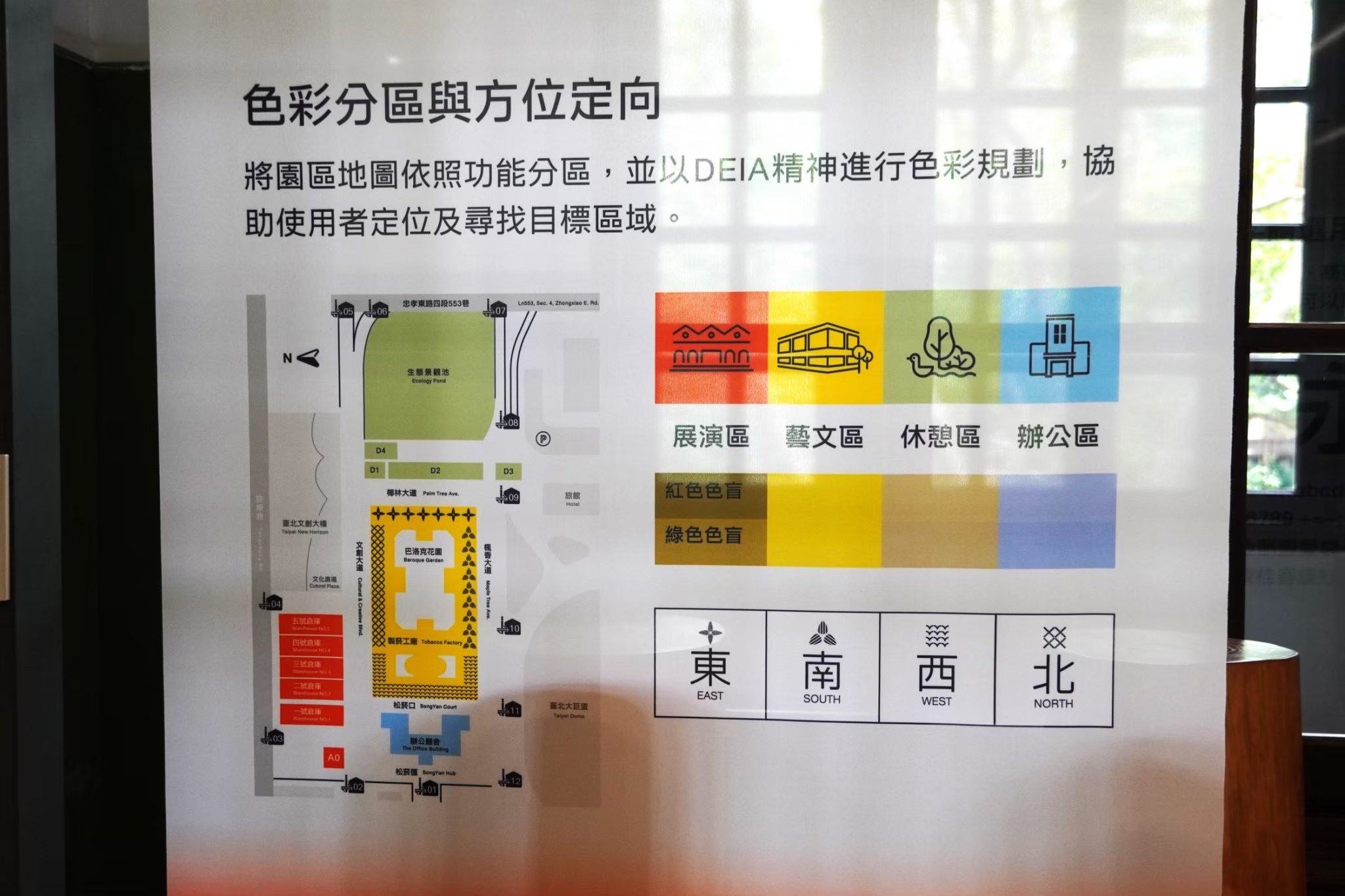
In addition to dividing the park area into four colors, the Taiwan Tech team also incorporated colorblind testing designs.